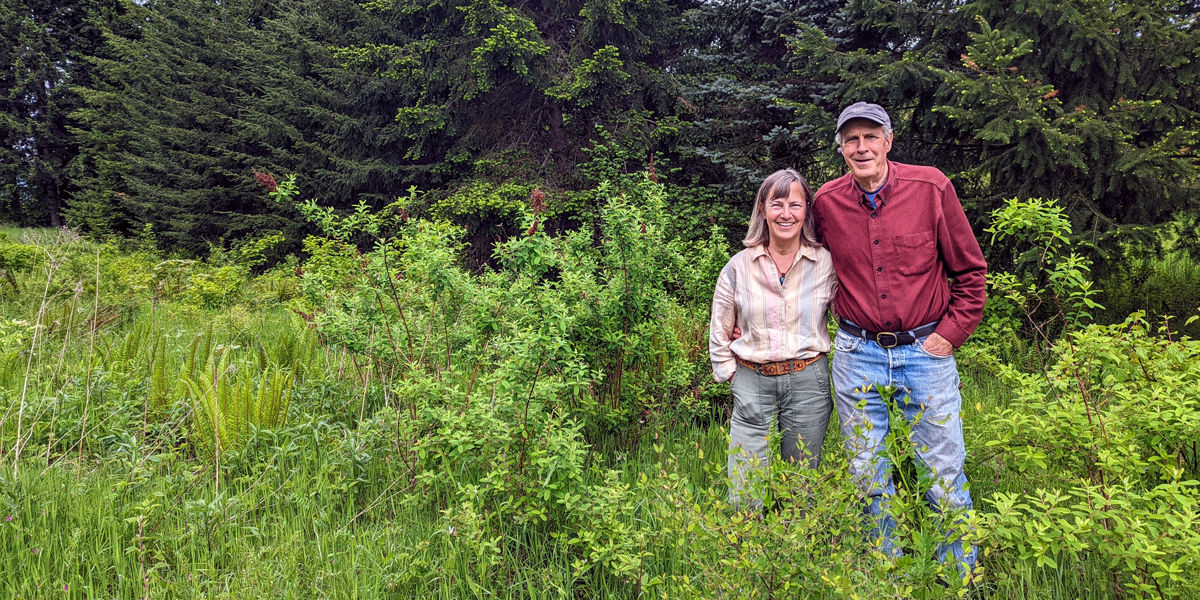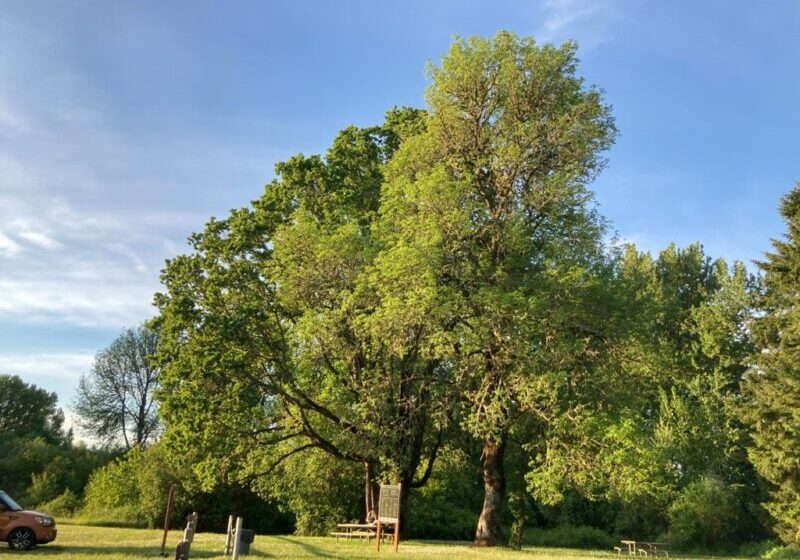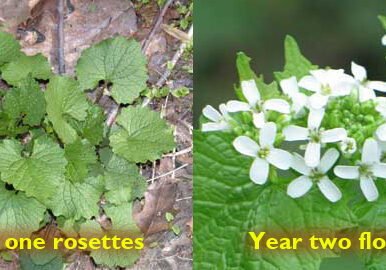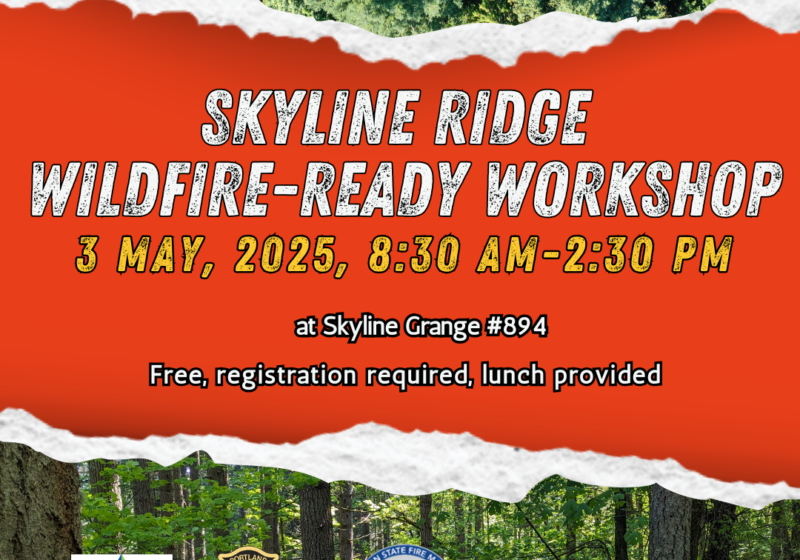Up in the Tualatin Mountains (also known as the West Hills) just north of Forest Park in Portland, Oregon lies a patchwork of forest, pastures, fields, and homes where the Skyline Neighborhood community resides. West Multnomah Soil & Water Conservation District has worked with many residents of this community to improve forest and stream health. We recently had the opportunity to catch up with one dynamic duo in this area, Laura and Kevin Foster who have been nurturing their young forest toward greater health for the past 32 years. The rich diversity of wildlife, plants, and micro-habitats present there today speaks to the dedication and heart that they bring to their connection with this land.
Kevin Foster purchased about 20 acres of land along McNamee Road in 1990 after the forest had been harvested four years prior. The area was poorly replanted, so much of the forest grew back in dense bigleaf maple clumps which re-sprouted from the cut stumps, while very few conifer trees were established. Much of Kevin’s early efforts were dedicated to establishing a diverse suite of native conifer trees to compliment the hardwoods. This included many valiant hours cutting back the exuberant maple sprouts in order to provide enough light for the young conifers to grow. He also built trails to allow better access to the forest growing on steep slopes.
Laura married Kevin and joined the Skyline community about eight years later. She wasn’t particularly inspired by this scrappy young forest at first, but the more she saw the land grow and change over time, the more drawn in she became by its beauty and wonder. Tending the forest began as a way to release energy after working on her writing all day. As Laura spent more time simply sitting in the forest off trail, she began to see and understand the poetic beauty in how nature is ‘messy’ yet still has a certain ‘rhyme or reason’ to it – how the death and decay feeds forest life.
Laura learned about and started removing invasive weeds such as English ivy from the forest floor, but was having a hard time with a few huge vines growing up some of the trees. A neighbor recommended getting in touch with West Multnomah SWCD for help, and so began our partnership with the Fosters in 2014 to help with this ivy removal. Our collective efforts then turned toward removing a large area of invasive English holly trees which had spread onto the property from a nearby abandoned holly farm. This was followed by planting a hedgerow of native shrubs in an opening in the forest to support pollinators. Laura eventually even rallied a few of her neighbors to join in a partnership to remove a large patch of invasive Armenian blackberry along the road, and replace this with a diverse suite of droughtDrought A longer than normal time with not enough rain tolerant Valley Ponderosa pines, Oregon white oaks, and flowering shrubs.
Laura and Kevin take a slow and steady approach in how they care for their land. They take time to watch what’s happening in the forest and consider who else is living there, from the elk to the birds and frogs, to help guide how they interact with the land. Based on what they learn, they may choose different ways to give the forest nudges toward greater diversity, complexity, and resiliency. For example, Laura has been excited to work with storms to help accelerate the forest’s succession toward more complex habitat, while still keeping a balance with wildfire resiliency. She does this by walking the forest after storms to find newly fallen trees and branches. If they’re still partially hung up in the forest canopy, Laura and Kevin help bring them all the way down to the ground so they can decompose faster. Downed wood that falls within a few hundred feet of the house get chipped and mulched to reduce wildfire fuels, while wood that falls farther away is cut into sections small enough to make ground contact.
Greater threats from fire, heat waves, and drought hold a strong presence in Laura and Kevin’s awareness as they consider what they might have done differently if they could go back in time. “We would have planted more oak and pine.” Kevin says. Laura adds, “We knew about climate change, but we didn’t know it would have such immediate and significant impacts.” As the Fosters continue to learn from their ever-evolving forest, these kinds of understandings will help inform how they steward this land for future generations. With the forest now showing signs of health and vitality, from the myriad native wildflowers gracing the forest floor to the clear trickling stream, it’s exciting to see the momentum that has built from our partnership.



